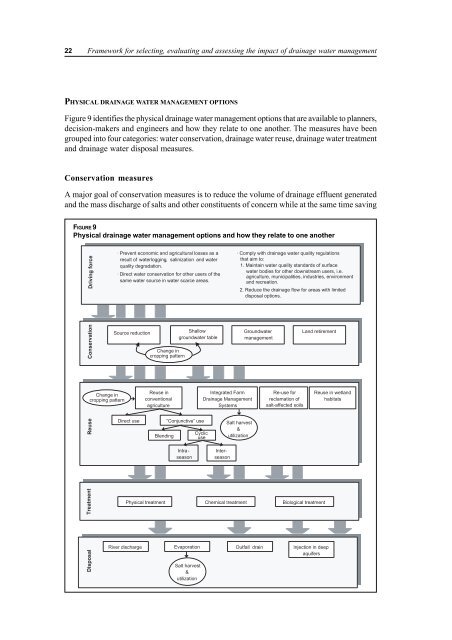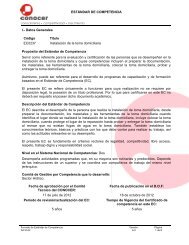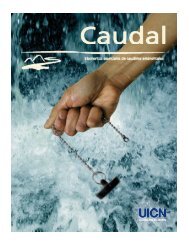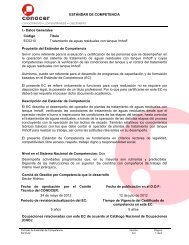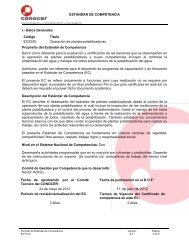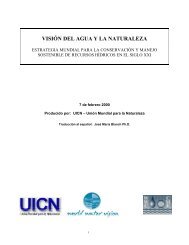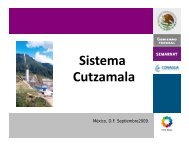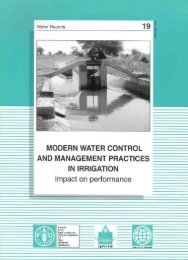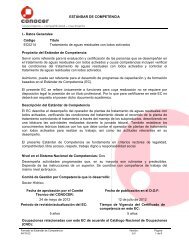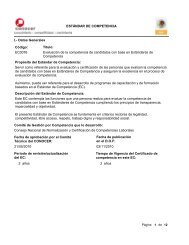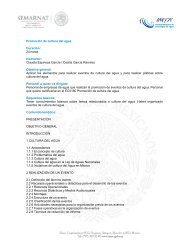Agricultural drainage water management in arid and semi ... - FAO.org
Agricultural drainage water management in arid and semi ... - FAO.org
Agricultural drainage water management in arid and semi ... - FAO.org
You also want an ePaper? Increase the reach of your titles
YUMPU automatically turns print PDFs into web optimized ePapers that Google loves.
22Framework for select<strong>in</strong>g, evaluat<strong>in</strong>g <strong>and</strong> assess<strong>in</strong>g the impact of <strong>dra<strong>in</strong>age</strong> <strong>water</strong> <strong>management</strong>PHYSICAL DRAINAGE WATER MANAGEMENT OPTIONSFigure 9 identifies the physical <strong>dra<strong>in</strong>age</strong> <strong>water</strong> <strong>management</strong> options that are available to planners,decision-makers <strong>and</strong> eng<strong>in</strong>eers <strong>and</strong> how they relate to one another. The measures have beengrouped <strong>in</strong>to four categories: <strong>water</strong> conservation, <strong>dra<strong>in</strong>age</strong> <strong>water</strong> reuse, <strong>dra<strong>in</strong>age</strong> <strong>water</strong> treatment<strong>and</strong> <strong>dra<strong>in</strong>age</strong> <strong>water</strong> disposal measures.Conservation measuresA major goal of conservation measures is to reduce the volume of <strong>dra<strong>in</strong>age</strong> effluent generated<strong>and</strong> the mass discharge of salts <strong>and</strong> other constituents of concern while at the same time sav<strong>in</strong>gFIGURE 9Physical <strong>dra<strong>in</strong>age</strong> <strong>water</strong> <strong>management</strong> options <strong>and</strong> how they relate to one anotherDriv<strong>in</strong>g force· Prevent economic <strong>and</strong> agricultural losses as aresult of <strong>water</strong>logg<strong>in</strong>g,, sal<strong>in</strong>ization <strong>and</strong> <strong>water</strong>quality degradation.· Direct <strong>water</strong> conservation for other users of thesame <strong>water</strong> source <strong>in</strong> <strong>water</strong> scarce areas.· Comply with <strong>dra<strong>in</strong>age</strong> <strong>water</strong> quality regulationsthat aim to:1. Ma<strong>in</strong>ta<strong>in</strong> <strong>water</strong> quality st<strong>and</strong>ards of surface<strong>water</strong> bodies for other downstream users, i.e.agriculture, municipalities, <strong>in</strong>dustries, environment<strong>and</strong> recreation.2. Reduce the <strong>dra<strong>in</strong>age</strong> flow for areas with limiteddisposal options.ConservationSource reductionChange <strong>in</strong>cropp<strong>in</strong>g patternShallowground<strong>water</strong> tableGround<strong>water</strong><strong>management</strong>L<strong>and</strong> retirementChange <strong>in</strong>cropp<strong>in</strong>g patternReuse <strong>in</strong>conventionalagricultureIntegrated FarmDra<strong>in</strong>age ManagementSystemsRe-use forreclamation ofsalt-affected soilsReuse <strong>in</strong> wetl<strong>and</strong>habitatsReuseDirect useBlend<strong>in</strong>g“Conjunctive” useCyclicuseSalt harvest&utilizationIntraseasonInterseasonTreatmentPhysical treatment Chemical treatment Biological treatmentDisposalRiver discharge Evaporation Outfall dra<strong>in</strong>Salt harvest&utilizationInjection <strong>in</strong> deepaquifers


